It’s back! Yes The Great Interior Design Challenge starts its third series on Monday 1 February with 16 amateur designers battling it out over 15 episodes. And guess what? The Mad House was the only UK blog invited to meet the presenters for an exclusive chat. Thrilled? Moi?
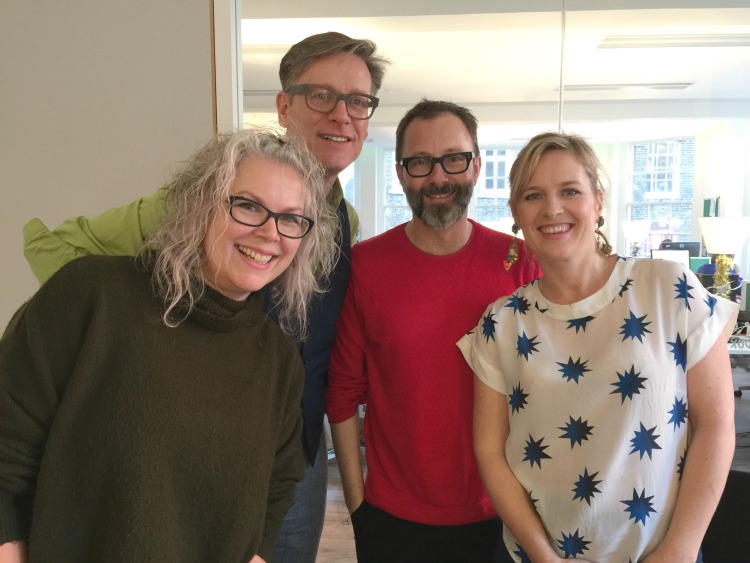
So off I trotted to their offices by the Tottenham Court Road to meet Architectural Historian Tom Dyckhoff who presents the series with judges Daniel Hopwood, the President of the British Institute of Interior Design, and interior stylist Sophie Robinson.
I began by asking Tom (because Sophie was late, and since I had just tweeted her from the TKMaxx on the corner and she replied saying she knew it well, there was a slight suspicion that she had stopped off for a quick rummage) if, seeing as he talks all about the architecture if he was more of an exteriors rather than an interiors man.
“I talk about interiors too, when there is a historical point worth making,” he says. “But it’s true that exteriors are more permanent. Interiors don’t last as long because they are easier to change and people take out features and put new ones in.”
So, straight in with the killer question: (I do not shirk from the tough job readers) would he allow any of the contestants loose in his own home? This is important. After all, these people are amateurs. This is the one where Laurence Llewellyn Bowen tosses his mane of hair and looks at you as if you’ve gone comPLETELY mad.
Not Tom. Tom, whose wife is also in the interiors business, has commissioned The Two Lovely Gays, one of whom, Jordan Cluroe, was runner up, in the first series, to do his own house.
“They came up with a whole board of ideas some of which we used and some of which we, er, didn’t but basically yes, we have trusted the contestants,” he says.
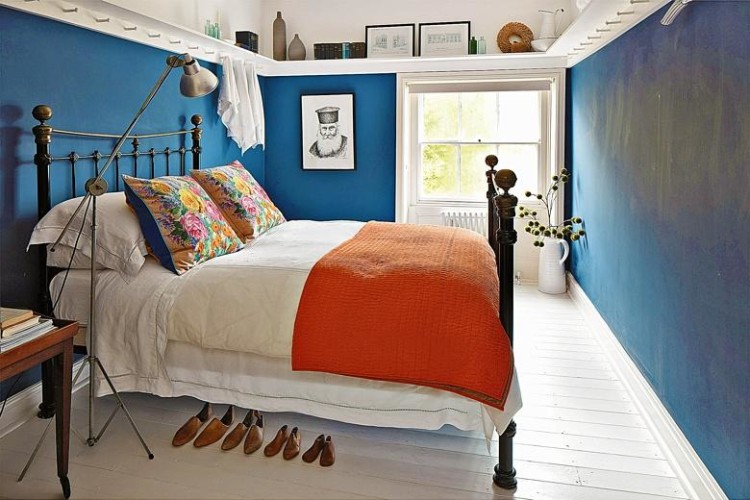
Even Daniel Hopwood, the president of the British Institute of Interior Design and a fully-trained, fully experienced, proper interior designer, has surprised himself as a result of presenting this show.
“I have done just a project with a breezeblock table and a scaffolding bar,” he says in wonderment, as if even he can’t quite believe what he is saying. “It has completely loosened me up.”
Sophie, who has arrived by this point (and if she has shopping bags she’s hidden them outside) says she is constantly impressed by the level of talent they uncover.
“I’ve been a stylist for 20 years and I was a little bit jaded – you know you think ‘oh that again, oh that old colour, I’ve seen it all before, but actually, this show has completely reignited my passion for the business.”
“We have been surprised by how innately skilled these amateurs are,” says Daniel. “Some of them have full time jobs and kids and real pressures on their time and we give them three days and £1,000 and they have to do it.
“It’s tough and there is a lot of pressure. Many of them don’t realise how pressurised it will be.”
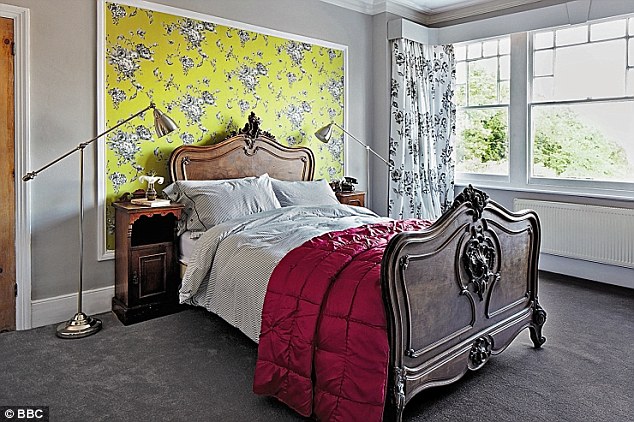
There is some discussion at this point if it’s more pressure than Masterchef or Bake Off. They think it might be. But not more pressure than I’m a Celebrity, they reckon. That’s the ultimate.
But surely if they are going to uncover new talent are they saying that it’s ok to do this job without training? That a good eye and a bit of innate skill with a sewing machine and a mood board will mean a whole new career?
Daniel is stern. Training is vital, he says. But what the show does give to contestants is a massive endorsement, a confidence boost that perhaps that person might be able to go on to a career in that sector. With a bit more training.
“It’s a badge of approval,” says Sophie.
“An amazing stepping stone,” says Daniel adding that as so many creative people are plagued with enormous self doubt, this can be the push they need to follow their dreams into the interior design field be it blogging, styling or further training.
“We push them harder than in real life,” says Tom, pointing out that unlike real life, both deadlines and budgets are completely inflexible on The Great Interior Design Challenge.

“They have seven days to pull a scheme together, says Daniel, before muttering quietly to himself: “It takes me about four months.
“They have to have an instinctive feel for it because of the time pressures.”
This third series also brings the clients in more. The contestants are marked on how they present their schemes and the clients are allowed in half way through to see how things are going.
This is definitely not the car crash TV that was Changing Rooms. Everything is signed off by the clients, they are getting what they want while having their boundaries pushed a little. That is the idea of the show and, indeed, of hiring an interior designer in real life.
“That said, there are some howlers coming up,” says Tom.
“What howlers?” says Sophie indignantly.
“Wells,”says Daniel mysteriously. “And Kent.”
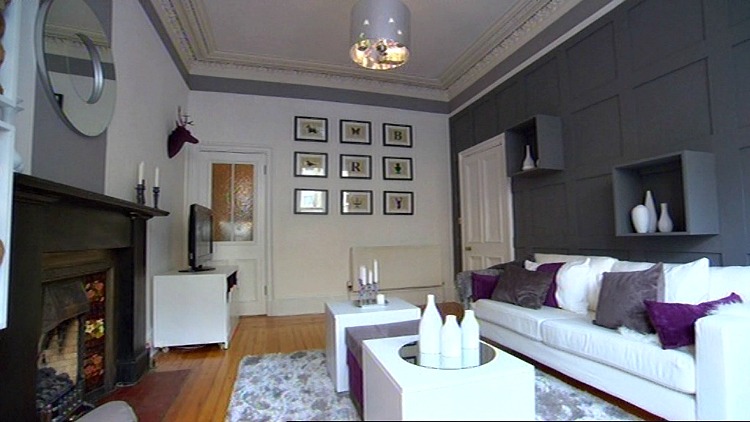
Given that the show does take itself seriously, but also needs to provide entertainment, do they need to slightly encourage the so-called howlers to provide the laughs and groans at the expense of making a serious programme?
Daniel says he tries to give heavy hints. “In series two I asked Martin Holland (who went onto win) if he really wanted that cardboard stag on the wall, but he didn’t get it at all.”
So much so that months later when the two met for a drink, Martin said he was going to bring a cardboard stag as a present for Daniel. It had taken that long for the penny to drop.
“We don’t interfere and we have to be tough on them,” says Daniel, adding firmly: “We are much tougher in this series.”
Cue that deep voice: Never mind the blaady cookin’, Interior Designin’ Dasn’t Get Tuffer than this.”
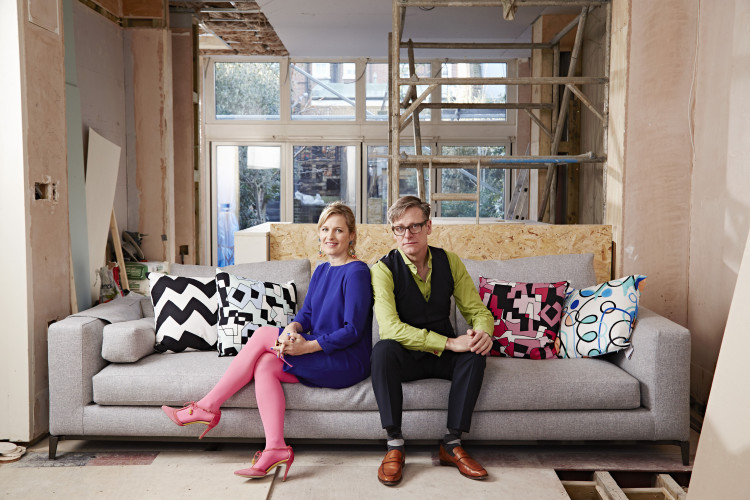
In addition to the 15 episode challenge, there will also be a special one-off programme featuring secrets and tips from the designers, judges and guest experts. In the finals they’ll be joined by guest judges Oliver Heath, Orla Kiely and Kelly Hoppen.





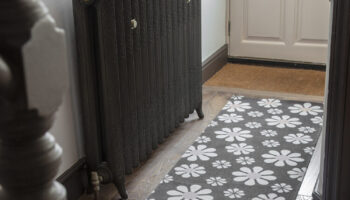
How do u apply to be an amateur designer on the show. I would love to do this…….
Loved this series but next time forget the big name designers for the finals.
Great interview. I can’t wait for the new show, 15 programmes plus a special, wow. I always gain so much from it, very inspirational, full of stylish ideas and thought provoking ready for my next project!
I’m looking forward to watching the new series, there’s not much else on the telly box for interiors lovers, and I like how they have a different type of architecture each week presenting new challenges. Great interview x
I am really looking forward to the new series. I love it from the perspective that I always seem to pick up some useful design tips along the way to the other end of the scale when I’m screaming at the television “NO don’t paint it in that colour!” Also enjoy the Architectural thread.
Great interview by the way Kate.
Great article, thank you Kate. It was so nice to meet you and share all the gossip about the forth coming series. The talent possessed by some of the designers has certainly humbled Daniel and I, while inspiring us too. Interior design is for all and not just the privileged few!
Diane I have to say I agree with you in the rushed approach that is ‘rough enough is good enough’ is a bad impression to give of interior designers. When I’m working on a project I literally obsess about it, eat, sleep and breathe it for months as the process if often complex and needs to be right. That said I think the contestants do often do a really amazing job with the limitations (time\money) and they do stress that they are ‘amateurs’ (although often with some experience it often transpires) At the end of the day it is a show providing ‘entertainment’ but unfortunately to some extent at the expense of those of us who have studied and trying to build a solid reputation in the field.
I really hate this programme. Not only do the competitors have no idea how to manage the stress of things going wrong on site – and they do, frequently – it gives the client a completely false idea of the value of using a professional project manager/designer. Because of the £1000 budget – which is hopelessly low for any project – they think that this is a ‘realistic’ fee. In an industry beset with problems created by cowboy builders, the GIDC fosters the same point of view – rough enough is good enough – and it absolutely isn’t for those of us who work hard to give our clients a professional, we’ll run job.